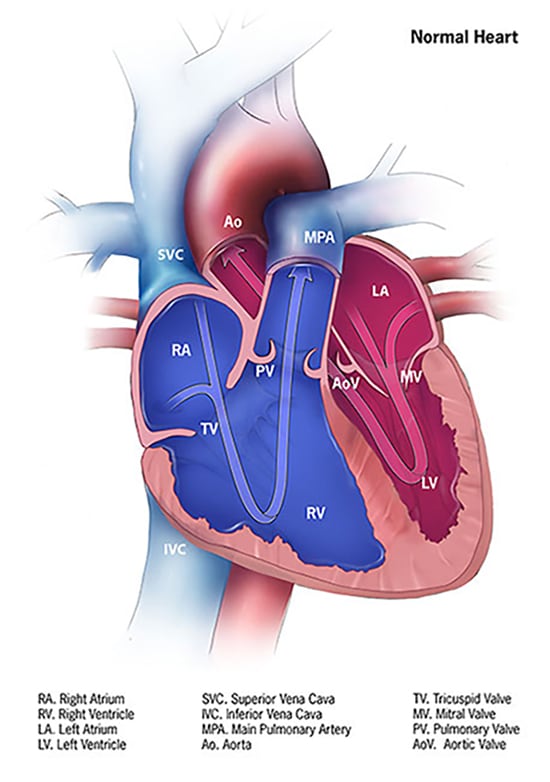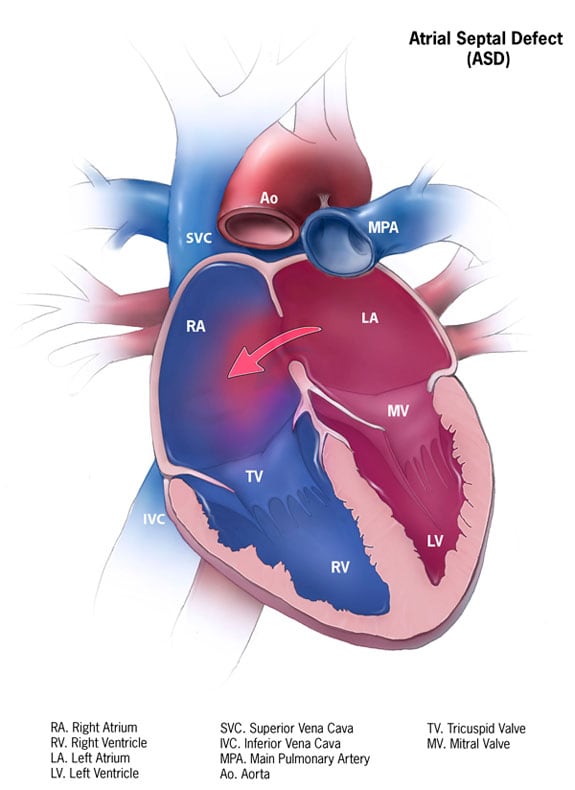The heart is derived mainly from mesoderm and partly from neural crest. Initially a heart tube is formed which undergoes looping to establish adult anatomical positions of the atria and ventricles. The proximal aspect of the heart tube forms the bulbus cordis. The distal portion is called the truncus arteriosus. Two atrioventricular or AV cushions, also known as endocardial cushions, grow from the endocardium of the heart tube and fuse in the middle to divide the AV canal into right and left parts. The endocardial cushions form the AV canals and valves as well as atrial and ventricular septa. The atrioventricular or AV canal has to be partitioned appropriately to allow normal circulation and oxygen delivery. Retinoic acid has a major role in development of the heart tube and AV cushions and any disruption e.g. intake of retinoic acid for acne etc. can lead to AV canal defects, hypoplastic right heart etc. AV canal or endocardial cushion defects are frequently seen in Down’s syndrome.

The septum primum extends from the roof of the atrium towards the endocardial cushions. The opening between them is the ostium or foramen primum. Eventually the septum primum and endocardial cushions fuse closing off the foramen primum. This happens concurrently with the development of a new foramen in the septum primum, this time by apoptosis of few cells in the septum. This new foramen is called the foramen secundum. The septum secundum develops in the right atrium, next to the septum primum. It grows down to the endocardial cushions but does not fuse with it completely, leaving an oval opening called foramen ovale. [Note that the foramen ovale is located inferiorly while the foramen secundum is located superiorly near the roof of the right atrium]. Immediately after birth, the foramen ovale closes functionally so that there is no more shunting of blood from the right atrium to the left atrium. This happens due to increased pressure in the left heart and reduced pressure in the right heart ( blood won’t flow from low to high pressures). Over a few months, there is anatomical fusion and total closure of the foramen ovale.

The primitive ventricle is divided by the interventricular septum into right and left ventricles. This septum is thick and muscular in the lower part and thin and membranous superiorly. The membranous part has contributions from the endocardial cushions and conotruncal cushions (read below). Neural crest cells from pharyngeal arches 4 and 6 migrate into the truncus arteriosus and bulbus cordis. This gives rise to the conotruncal cushions or ridges. The conotruncal ridges divide the truncus arteriosus into the pulmonary trunk and aorta. They fuse and then spiral in a way that the pulmonary trunk ends up anterior to the aorta. The conotruncal ridges also give rise to the semilunar valves - pulmonary and aortic, both have three leaflets each. The atrioventricular valves or tricuspid and mitral valves are formed from the AV cushions. Failure of neural crest cell migration and differentiation can cause persistent truncus arteriosus, transposition of great vessels and tetralogy of Fallot. The right vitelline vein forms the hepatic, splenic, superior mesenteric and inferior mesenteric veins.
The respiratory diverticulum, which eventually forms the lower respiratory tract and lungs, develops as a ventral outgrowth from the endoderm of the foregut. Mesodermal ridges called tracheo-esophageal ridges give rise to the trachea. Epithelium and glands of the larynx and trachea are derived from endoderm. Surfactant production begins between weeks 20-22.
The diaphragm is formed by the septum transversum and the right and left pleuroperitoneal membranes.
Sign up for free to take 3 quiz questions on this topic